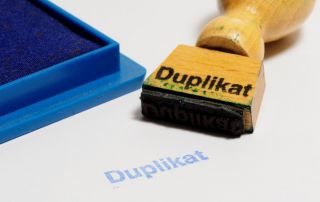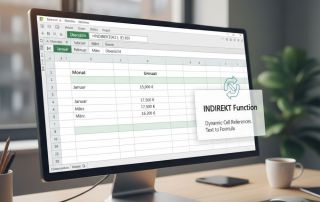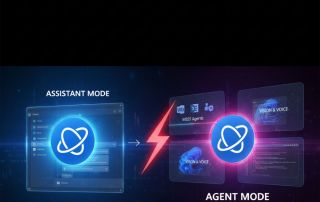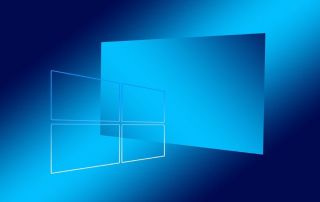Finally faster Internet WiFi 6 is at the start
It’s now 6 years since the current WLAN standard 802.11ac accompanies us everywhere. But now comes with Wi-Fi 6, the change of guard, and promises more than just a decent increase in speed.
And that is necessary with increasing broadband deployment as well. Because in more and more households thanks to fiber optic technology 1 gigabit ports and more are already partly reality.
Finally faster Internet WiFi 6 is at the start
It’s now 6 years since the current WLAN standard 802.11ac accompanies us everywhere. But now comes with Wi-Fi 6, the change of guard, and promises more than just a decent increase in speed.
And that is necessary with increasing broadband deployment as well. Because in more and more households thanks to fiber optic technology 1 gigabit ports and more are already partly reality.
The Wi-Fi future starts with Wi-Fi 6 at the start
The official name for the new WLAN standard is called “802.11ax”.
Since the normal user through the whole cryptic terms and number combinations no longer exceeds the new wireless standard is colloquially referred to as Wi-Fi 6. Already on the technical specifications can be seen the restrictions that were still in Wi-Fi 5 (WLAN ac) were finally a thing of the past. Wi-Fi 6 now works again on both WLAN frequency bands with 2.4GHz and 5GHz.
The whole thing is even prepared for other frequency ranges, so that in the future also in the 6GHz range can be worked.
The maximum speed of Wi-Fi 6 is (theoretically) 9.6 Gigabit (equivalent to 1200 Mbit). That would be just 1.2 gigabytes per second in the download. The previous Wi-Fi standard Wi-Fi 5 creates with a maximum of 3.5 gigabit just a third of it.
The new WLAN standard divides the available bandwidth into up to 256 subchannels, whereas the predecessor only divided 64 channels. This significantly reduces the conflicts with other WLAN networks in the environment, or ideally can be completely eliminated by shutting down individual channels without having to sacrifice noticeable performance capacity.
Thanks to the increased bandwidth of channels, Wi-Fi 6 can now also distribute the radio channels more flexibly to the end devices, which in particular benefits the development of the smart home. Because there are more and more devices that are connected in the household both internally and externally via the home network.
The first Wi-Fi 6 routers are now already on the market, so now only the appropriate broadband connections must come across to make the departure of the old Wi-Fi standards complete. As already mentioned, broadband expansion with 1 Gigabit connections and more is in full swing, but compared to other countries, Germany is still a digital desert that has been waiting too long to keep pace with the rapid development of digitization.
The bottom line is that Wi-Fi 6 is still in its infancy, but it’s a forward-looking, positive development that takes into account ever-expanding amounts of data and connected devices.
The Wi-Fi future starts with Wi-Fi 6 at the start
The new WLAN standard divides the available bandwidth into up to 256 subchannels, whereas the predecessor only divided 64 channels. This significantly reduces the conflicts with other WLAN networks in the environment, or ideally can be completely eliminated by shutting down individual channels without having to sacrifice noticeable performance capacity.
Thanks to the increased bandwidth of channels, Wi-Fi 6 can now also distribute the radio channels more flexibly to the end devices, which in particular benefits the development of the smart home. Because there are more and more devices that are connected in the household both internally and externally via the home network.
The first Wi-Fi 6 routers are now already on the market, so now only the appropriate broadband connections must come across to make the departure of the old Wi-Fi standards complete. As already mentioned, broadband expansion with 1 Gigabit connections and more is in full swing, but compared to other countries, Germany is still a digital desert that has been waiting too long to keep pace with the rapid development of digitization.
The bottom line is that Wi-Fi 6 is still in its infancy, but it’s a forward-looking, positive development that takes into account ever-expanding amounts of data and connected devices.
Popular Posts:
Wer ist wo? Microsoft Teams schafft Klarheit im Hybrid-Büro
Die neue Arbeitsstandort-Funktion in Microsoft Teams zeigt, wer im Büro oder remote arbeitet. Verbessern Sie Ihre Meeting-Planung in Outlook und die Team-Koordination. Wir erklären die Vorteile, die Admin-Steuerung und die tiefe Anbindung an Microsoft Viva.
Excel Tutorial: How to quickly and safely remove duplicates
Duplicate entries in your Excel lists? This distorts your data. Our tutorial shows you, using a practical example, how to clean up your data in seconds with the "Remove Duplicates" function – whether you want to delete identical rows or just values in a column.
Dynamic ranges in Excel: OFFSET function
The OFFSET function in Excel creates a flexible reference. Instead of fixing =SUM(B5:B7), the function finds the range itself, e.g., for the "last 3 months". Ideal for dynamic charts or dashboards that grow automatically.
Mastering the INDIRECT function in Excel
The INDIRECT function in Excel converts text into a real reference. Instead of manually typing =January!E10, use =INDIRECT(A2 & "!E10"), where A2 contains 'January'. This allows you to easily create dynamic summaries for multiple worksheets.
From assistant to agent: Microsoft’s Copilot
Copilot is growing up: Microsoft's AI is no longer an assistant, but a proactive agent. With "Vision," it sees your Windows desktop; in M365, it analyzes data as a "Researcher"; and in GitHub, it autonomously corrects code. The biggest update yet.
Windows 12: Where is it? The current status in October 2025
Everyone was waiting for Windows 12 in October 2025, but it didn't arrive. Instead, Microsoft is focusing on Windows 11 25H2 and "Copilot+ PC" features. We'll explain: Is Windows 12 canceled, postponed, or is it already available as an AI update for Windows 11?
Popular Posts:
Wer ist wo? Microsoft Teams schafft Klarheit im Hybrid-Büro
Die neue Arbeitsstandort-Funktion in Microsoft Teams zeigt, wer im Büro oder remote arbeitet. Verbessern Sie Ihre Meeting-Planung in Outlook und die Team-Koordination. Wir erklären die Vorteile, die Admin-Steuerung und die tiefe Anbindung an Microsoft Viva.
Excel Tutorial: How to quickly and safely remove duplicates
Duplicate entries in your Excel lists? This distorts your data. Our tutorial shows you, using a practical example, how to clean up your data in seconds with the "Remove Duplicates" function – whether you want to delete identical rows or just values in a column.
Dynamic ranges in Excel: OFFSET function
The OFFSET function in Excel creates a flexible reference. Instead of fixing =SUM(B5:B7), the function finds the range itself, e.g., for the "last 3 months". Ideal for dynamic charts or dashboards that grow automatically.
Mastering the INDIRECT function in Excel
The INDIRECT function in Excel converts text into a real reference. Instead of manually typing =January!E10, use =INDIRECT(A2 & "!E10"), where A2 contains 'January'. This allows you to easily create dynamic summaries for multiple worksheets.
From assistant to agent: Microsoft’s Copilot
Copilot is growing up: Microsoft's AI is no longer an assistant, but a proactive agent. With "Vision," it sees your Windows desktop; in M365, it analyzes data as a "Researcher"; and in GitHub, it autonomously corrects code. The biggest update yet.
Windows 12: Where is it? The current status in October 2025
Everyone was waiting for Windows 12 in October 2025, but it didn't arrive. Instead, Microsoft is focusing on Windows 11 25H2 and "Copilot+ PC" features. We'll explain: Is Windows 12 canceled, postponed, or is it already available as an AI update for Windows 11?

































